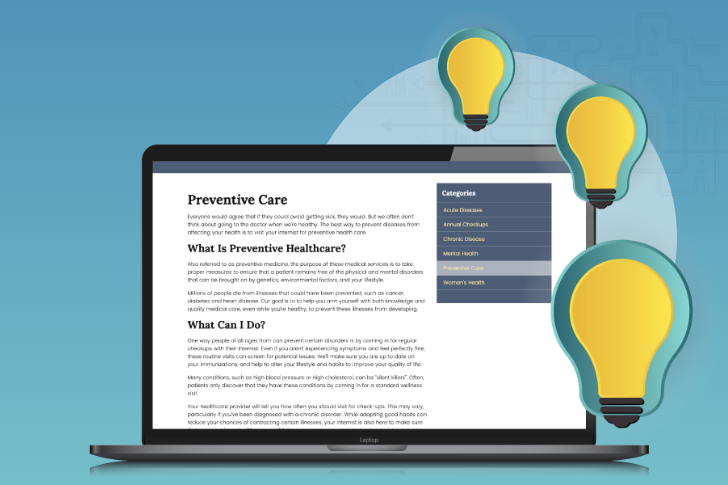How Users Search for a Practice on the Web: Past and Present
As the most influential search engine, Google faces a daily challenge in how they can best present results to users. Google changes its search algorithm roughly 500-600 times per year.
We’ll go through how Google search algorithms have changed over time and how those changes affect the way you should present your practice online.
Some of the changes will almost never affect health care professionals. However, there are some Google algorithm changes that you should be aware of because they can directly affect your online presence.
Google Hummingbird: Conversational Searches
Google Hummingbird changed the way that Google looked at websites. Google searches have shifted to “conversational searches,” meaning Google recognizes the meaning behind words and their context. Significantly, it places value on ALL the words within a Google search query, rather than on individual keyword matches.
Because the goal of Hummingbird is to provide pages that match the meaning of search queries, attention should be paid to who the website audience is and what sort of questions they might be asking. Focus on building your engagement on social media & social signals as well, whether they be likes, shares of your content, or tagging posts.
Google Panda: Prioritizing the User Experience
Google Panda identifies the signals that indicate that a website is trying to gain an unfair advantage within SERPs. As a rolling launch, some websites saw their traffic virtually disappear overnight.
Due to the heavy impact Panda can have, it’s important to keep watch on reported changes to ensure your website is protected. For best results, remove all duplicate pages/content from your site. In addition, try to improve the user experience on the website.
Low engagement with the website is a major signal to Google that the website is not providing what the searcher wanted to find.
Google Penguin: Punishing “Black-Hat” SEO Techniques
Google Penguin was created to reduce the practice of spam and over-optimization. More recently, it has focused on such SEO abuses as keyword stuffing and unnatural link building.
Make sure that your website’s links are natural, meaning that they flow and make sense within the content/context of the verbiage. If a sentence doesn’t read well because an unlikely SEO term has been shoehorned in, change it.
You should also continuously monitor backlinks via Google webmaster tools; if there are backlinks from low-quality websites that use anchor text, work with the referring website to remove the link or disavow the links.
Because of the impact, these bad backlinks can have, it’s recommended that website owners check Google webmaster tools at least once a month.
Google Pigeon: Make Your Website More Visible
Google Pigeon was launched to improve websites’ visibility, allowing Google to dig deeper when mining data during a simple search. It virtually eliminated duplicate entries in search results displaying local results, whereas prior it was entirely possible to have your website listed multiple times in Search Engine Results Pages for a keyword/phrase.
It’s essential to ensure NAP (name, address, phone) consistency across local listings & directories. Implement a strong local visibility SEO strategy that includes the creation of content that will appeal to local searchers.
Next Steps
You can use this short history of Google search algorithm updates to see how web users are looking for your practice over time. Learn what Google has begun to prioritize and make sure that your SEO strategy and website are in line with those practices.
If you have any questions or want to make sure your website is following the best search engine optimization practices, contact us today.



